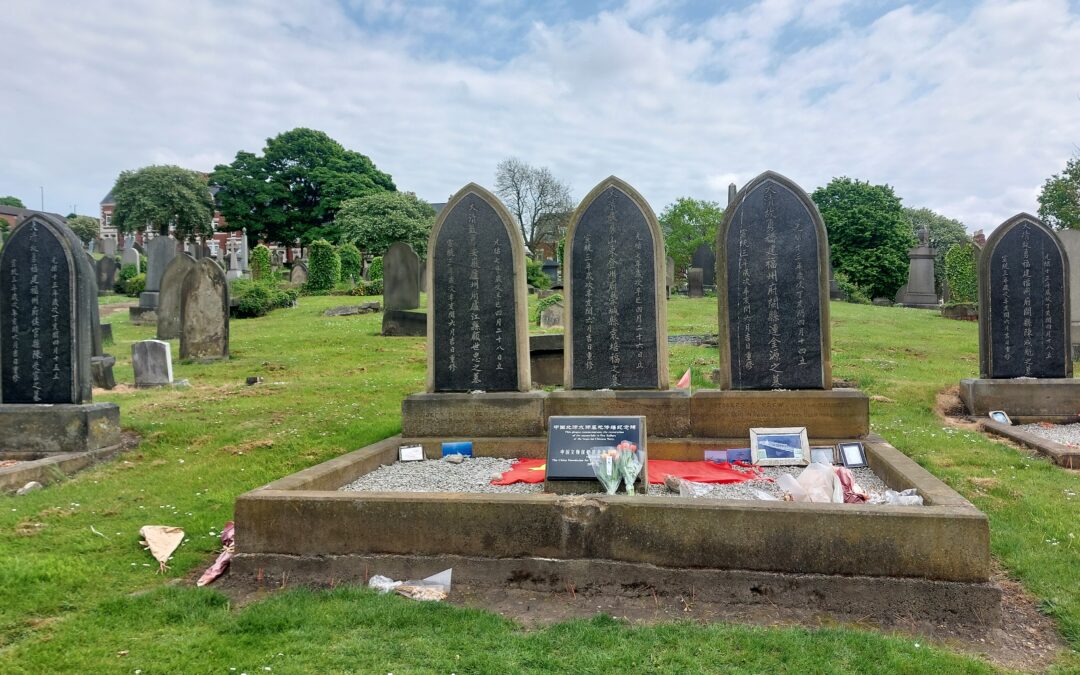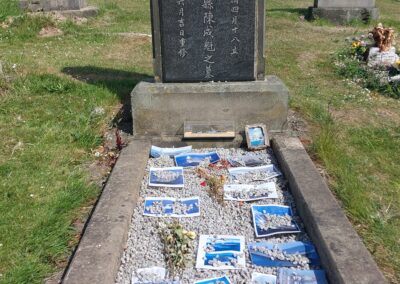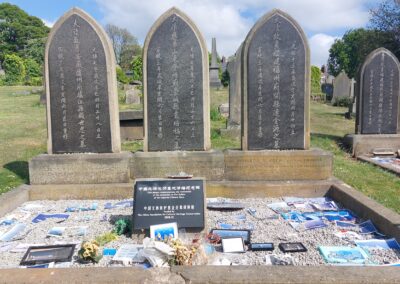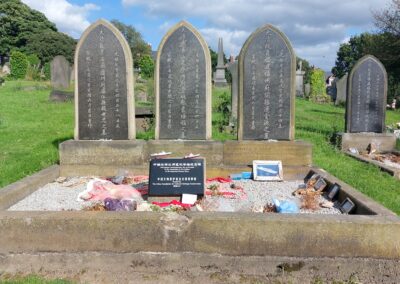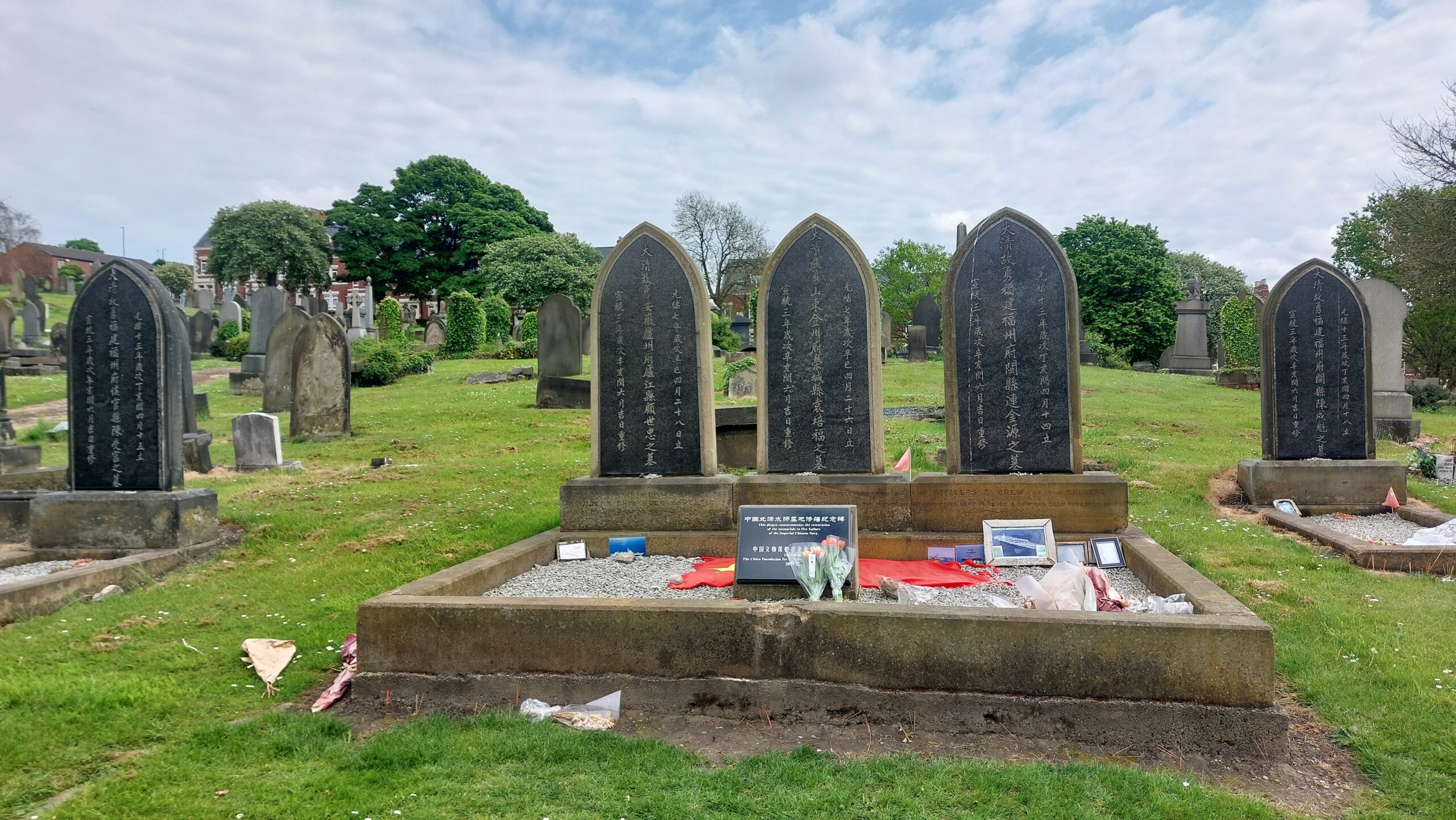
If you are a regular visitor to St John’s Cemetery, chances are you may have crossed paths with groups of young Chinese students, local Chinese people or Chinese tourists carrying offerings and heading for the six headstones colloquially known as the Chinese sailor graves. What thrall do these graves from the late nineteenth century hold for Chinese people in contemporary times, and why are they so well visited and so many offerings left on them?
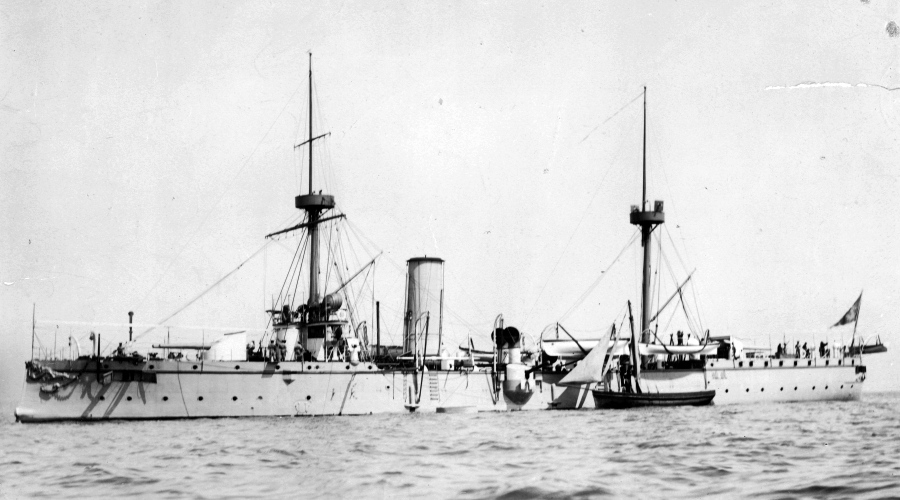
In the 1880s, the Imperial Chinese Navy purchased four battle cruisers from Newcastle shipyards to bolster the most powerful naval force assembled during the Qing Dynasty, the Beiyang or Northern Fleet. Two cruisers were purchased from the Armstrong-Whitworth yard in Elswick which was down the bank from the cemetery on the Tyne. These were the Zhiyuan, and the Jingyuan. steel protected cruisers, fast with big guns. The gravestones commemorate the sailors Yuan Peifu, Gu Shizhong, Lian Jinyuan, Chen Shoufu, Chen Chengkui, and Gan Zhaogong, who became ill and died in Newcastle whilst waiting to sail the ships back to their base in China and were buried by the crew in St. John’s cemetery.
Although the six sailors lost their lives in Newcastle, their comrades sailed the cruisers – Zhiyuan and Jingyuan – back to China successfully. These Armstrong-produced ships joined the Battle of the Yalu River in 1894 where the Zhiyuan was hit and sunk by the Japanese Navy, while the Jingyuan suffered considerable fire damage and was put out of action six months later. The story of the sinking of the Zhiyuan, and the heroics of her captain Deng-shi-Chang and his dog who tried to save him, has become embedded in Chinese popular culture. It is believed that the dog was from Elswick, where the Zhiyuan had been built at the Armstrong Whitworth Works.
Over time, the graves fell into poor condition and following their re-discovery more than a century later, a campaign was launched in 2016 to restore the damaged gravestones. In 2018 the graves were restored by the China Foundation for Cultural Heritage Conservation.
Speaking at the restoration ceremony, the Chinese Embassy in the UK said that “in commemorating the five Beiyang Fleet sailors and revisiting China’s modern history, one should never forget the national humiliation and should make every effort to achieve the Chinese dream of realizing the great rejuvenation of the Chinese nation.”
It has been summised by Bruce Davenport, an academic from Newcastle University who became interested in the cultural phenomenon of the frequently visited sailor graves, that “we can infer that the visitors to the graves in Newcastle feel themselves part of a community that can legitimately communicate with the deceased sailors. The objects and messages laid on the graves are the medium of that communication and” “they come with the expectation that the deceased sailors are listening and are comforted.”
.

